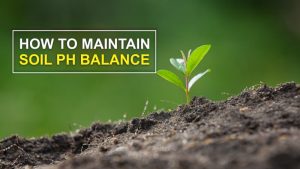The renowned dry fruit known as the almond, which is consumed for its ability to promote energy, is primarily grown in Asia’s South and Middle Eastern regions. It is essentially a medium-sized tree plant belonging to the rose family that looks like a peach, apricot, plum, etc. tree. This fruit that boosts energy has edible seeds inside of a coconut-like, tough shell. When it reaches maturity, its shell splits open, allowing the dried almond fruit or nuts to be readily extracted from the hard, brittle shell.
There are two varieties of almonds sold in stores: sweet almonds and bitter almonds. Aside from being consumed as dry fruit, almonds are also utilized to make a variety of scrumptious and mouthwatering desserts. These dried fruits are typically consumed with milk and used as an energy booster.
Almond Cultivation in India:
However, some mountainous regions of India, such as Jammu & Kashmir, Himachal Pradesh, Uttarakhand, Kerala, Andhra Pradesh, and Uttar Pradesh, still have restrictions on almond growing. Profit from almond farming is rising quickly in India. Both sweet and bitter almond trees are cultivated in India. When young, Indian almonds grow one meter in a year and are extremely quick-growing plants. The cost of 1 kg of almonds in India ranges from Rs 600 to Rs 1500 depending on the kind and market area. Additionally, people in India are becoming accustomed to the California almond production, and there is a growing market for California almonds there.
Agroclimatic Conditions for Almond Farming
There are almond farms practically everywhere in the world. But the production of fruit depends much on the almond tree’s growth in favorable weather and environmental conditions. An almond tree plant needs a moderately hot environment with temperatures between 28 °C to 38 °C for the best growth rate, as well as a cool winter for proper kernel filling. This crop’s unopened blooms can withstand cold up to 2.0 °C, white blossoms in the petal-fall stage are more susceptible to harm at temperatures of 0 °C and lower.
Soil Requirement
The almond tree plants can thrive in a wide range of soil types with a pH range of 6.8 to 8.5. However, it is believed that growing almonds in deep, loamy soil with good drainage is the greatest option for getting the most fruit. However, the heavy, poorly drained soil that has issues with water lodging prevents these fruit trees from growing well.
The Almond Farming Land Preparation
A well-prepared plot of land will undoubtedly produce more fruit when it is planted. Additionally, the cultivating soil should be devoid of weeds and other materials, and it should have a good tilth shape. A total of two to three regular plowing sessions with the neighborhood tractor, followed by a couple of harrowing sessions, is sufficient to get soil into fine tilth form. At the time of the last harrowing or plowing, approximately 25 tonnes of well-rotten farmyard manure per acre should be put in to improve the soil fertility and production.
Technique for Propagation
The two main methods used to grow this fruit crop are seeds and vegetative propagation. Almond seeds should be sown directly onto the field in well-prepared beds if almonds are to be propagated using seeds.
To improve seed germination, nuts should be properly laminated at the time of seed sowing. Peach can be used as a rootstock for propagation as well. However, tree plants cultivated through rootstock planter are unable to endure for an extended period of time.
Manure and fertilizer application in almond farming
Trees that produce almonds are heavy feeders. Therefore, there is a significant requirement for fertilizers and manure. When preparing the field, it is desirable to add 5 tonnes of farmyard manure per hectare to increase the fertility and productivity of the soil. 20 kg of farmyard manure should also be added for appropriate and improved plant growth. Good, fertile soil can result in the highest possible nut production. Before planting, conduct a single soil test to determine the soil’s fertility and any organic matter deficiency. Any organic matter that is lacking should be supplemented solely during the land preparation process.
Almond farming irrigation
The need for irrigation in commercial almond farming is a crucial activity that affects the production of nuts and varies based on the temperature and kind of soil used for growth. Water will, however, be supplied based on plant needs.
The most effective irrigation method for making the most of water is drip irrigation.
Almond Harvesting:
In the latter part of July, the shell begins to crack somewhat and start changing color from green to yellow. Late in August, splits widen and reveal more of the nut’s shell, allowing it to cure and become marketable.
There are numerous methods for harvesting almonds, but tree shaking is the method that growers use most frequently. However, producers also employ hand harvesting techniques. But be careful when harvesting to avoid damaging fruiting branches by tapping them with bamboo sticks.
Allow the gathered almonds to dry for a few days in a shady location. While the nuts are drying, rain could diminish their quality. then using manual methods, remove the hull.
Benefits of Almond:
- Since almonds contain a variety of minerals, consuming this dry fruit is good for the body’s development, overall health, and the proper functioning of the brain.
- Almonds can help you regulate your bad cholesterol levels effectively.
- These are a great source of phosphorous, which is good for maintaining bone health, as well as many other minerals and vitamins.
- They are wonderful sources of protein, monounsaturated fats, and potassium, all of which assist to protect us from a variety of heat-related illnesses.
- Additionally helpful for boosting and strengthening the immune system are almonds.
- These dried fruits are beneficial for both healthy blood control and providing relief from inflammation.
- Because almond oil promotes fairness and smoothness of skin, it is usually advised to massage newborn infants.
- Copper, manganese, and riboflavin are nutrients found in almonds and are beneficial for both excellent energy production and metabolic rate.
- Almonds’ high dietary fiber content is advantageous in reducing the risk of colon cancer.
- In addition to this, almonds are beneficial for pregnant women and can help prevent diabetes. Almonds are also eaten for effective weight management, though.
Get latest updates of agriculture industry from khetiguru mobile application. Visit khetigaadi.com for tractors, tractor price, tractor videos, tractor games.




